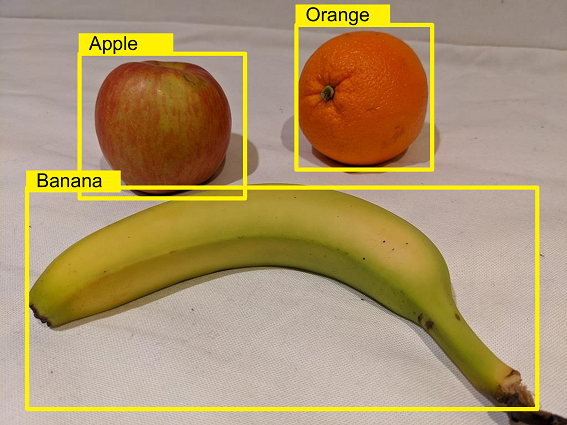Understand object detection
Object detection is a form of computer vision in which a model is trained to detect the presence and location of one or more classes of object in an image. For example, an AI-enabled checkout system in a grocery store might need to identify the type and location of items being purchased by a customer.

There are two components to an object detection prediction:
- The class label of each object detected in the image. For example, you might ascertain that an image contains one apple and two oranges.
- The location of each object within the image, indicated as coordinates of a bounding box that encloses the object.
Use the Azure AI Custom Vision service for object detection
You can use the Azure AI Custom Vision service to train an object detection model. To use the Azure AI Custom Vision service, you must provision two kinds of Azure resource:
- A training resource used to train your models. This can be:
- An Azure AI services multi-service resource.
- An Azure AI Custom Vision (Training) resource.
- A prediction resource, used by client applications to get predictions from your model. This can be:
- An Azure AI services multi-service resource.
- An Azure AI Custom Vision (Prediction) resource.
You can use a Azure AI services multi-service resource for both training and prediction, and you can mix-and-match resource types (for example, using an Azure AI Custom Vision (Training) resource to train a model that you then publish using an Azure AI services multi-service resource). If using a multi-service resource, they key and endpoint for both training and prediction will be the same.